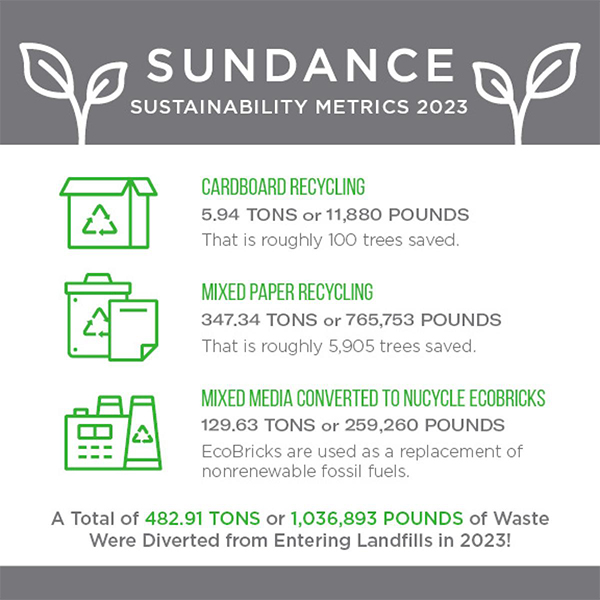- Howie Fenton
- |
- April 15, 2025
In today’s competitive business environment, companies recognize sustainability as far more than a trend. It’s a strategic necessity.
As a result, corporate leaders are increasingly pushing their in-plant printing operations to adopt sustainable practices that reduce environmental impact, enhance corporate responsibility, and strengthen brand reputation. In this blog post, I’ll explore the “why and how” of implementing sustainability efforts in your in-plant.

Why Does Sustainability Matter?
The urgency of aligning with environmental best practices has never been more evident, for multiple reasons. Here are five drivers that are pushing companies in that direction:
1. Regulatory Compliance
Emerging regulations such as the Extended Producer Responsibility (EPR) mandates in states like Maine, Oregon, and California make sustainability a priority, as do new policies requiring comprehensive disclosure of greenhouse gas emissions.
Moreover, regulatory environments worldwide are becoming stricter regarding environmental impacts. Companies proactively adopting sustainable practices will find it easier to meet current regulatory standards and smoothly adapt to future legislative changes. By staying ahead of regulations, printing companies can avoid costly fines, minimize risks of operational disruptions, and enhance their competitive edge.
2. Customer Values
A growing number of consumers today prioritize purchasing from eco-friendly businesses. By aligning with these customer values, businesses can attract those eco-conscious consumers, fostering brand loyalty to ultimately lead to increased market share.
For instance, by using recycled materials, soy-based inks, biodegradable packaging, and energy-efficient machinery, printing companies can demonstrate a commitment to protecting the environment to their customers — and attract new ones with the same values.
3. Reduced Operational Costs
Sustainability can also significantly reduce operational costs. Practices like waste reduction, recycling, water conservation, and efficient energy use can substantially save materials and utility expenses.
Although initially expensive, investments in sustainable equipment and processes reduce consumption and maintenance costs in the long term, enhancing overall profitability.

4. Brand Reputation
Embracing sustainability can significantly boost brand reputation. Businesses known for eco-friendly practices often enjoy enhanced community support, improved public perception, and stronger business partnerships. These factors set them apart in a crowded marketplace, enabling them to attract new clients, retain existing customers, and build stakeholder trust.
Some companies create infographics and marketing campaigns to highlight their efforts. For example, one of my clients, Sundance, has created a web page with an infographic to promote their efforts.
5. Employee Morale
Sustainability contributes positively to employee morale and productivity, while attracting younger hires. Generation Z staff (born 1997–2012) are highly motivated by environmental and social responsibility, Millennials (born 1981–1996) are the pioneers in advocating for sustainability and corporate accountability, and Generation X (born 1965–1980) increasingly value sustainability, especially related to ethical business practices and responsible consumption.
Employees take pride in working for organizations aligned with their values, resulting in higher job satisfaction, lower turnover rates, and improved productivity. This positive workplace environment can attract talented professionals who prioritize working with purpose-driven organizations.
How Do Print Companies Become More Sustainable?
How can printing companies adopt key strategies to become more sustainable? Here are a few places to start:
1. Improve Lighting
Improving and reducing the cost of lighting is one of the easier initiatives you can implement. Simply replacing metal halide lighting with fluorescent fixtures is a good start, followed by adding motion sensors in office areas.
2. Use Eco-Friendly Materials
Using eco-friendly materials is another good starting point. Companies should consider opting for recycled paper or sustainably sourced paper certified by the Forest Stewardship Council (FSC) and employing soy-based or vegetable-based inks instead of petroleum-based inks to minimize toxic emissions. However, be aware and schedule extra time to readjust your starting ink densities.
3. Reduce and Recycle
In last month’s blog post, Enhancing Your Print Workflow: The Keys to Efficiency and Growth, I wrote about how to measure and reduce rework. Reducing waste and enhancing recycling practices can significantly boost sustainability efforts. Companies can implement comprehensive recycling programs for paper, ink cartridges, and packaging materials and establish internal processes to repurpose or reuse wastepaper and other materials whenever feasible.
How RSA Supports Sustainability
RSA offers software solutions that support sustainability efforts in in-plant printing operations. RSA products focus on optimizing print workflows, reducing waste, and enhancing operational efficiency — all of which contribute to more sustainable printing practices. For instance:
- WebCRD automates print ordering, enabling users to submit print requests online. This automation reduces manual interventions, minimizes errors, and decreases the paper waste associated with traditional ordering methods. WebCRD also enhances efficiency and supports sustainability goals by streamlining job submissions and approvals.
- QDirect centralizes and automates the management of print jobs across an enterprise. Determining the most appropriate devices and consolidating print queues reduces unnecessary printing and optimizes resource utilization, lowering energy consumption and material waste.
- ReadyPrint automates prepress processes, ensuring files are print-ready and reducing the likelihood of errors that can lead to reprints. This efficiency saves time and conserves paper and ink, directly supporting sustainability initiatives.
Conclusion
Sustainability is a critical approach for printing companies aiming for long-term success, as they try to meet financial objectives and stay resilient. No longer optional for in-plant and commercial printing companies, it’s a strategic imperative.
Companies aligning with sustainable practices will contribute positively to the environment and gain competitive advantages, financial benefits, and long-term business resilience.
Proactively adopting sustainable practices allows printing businesses to significantly enhance their competitive advantage while contributing positively to the global environment – and increasing your chances for recruitment.
By implementing RSA’s software solutions, in-plant print centers can achieve greater operational efficiency, reduce waste, and align with broader sustainability objectives.
How and Why In-Plants Should Adopt Sustainability Principles
In today’s competitive business environment, companies recognize sustainability as a strategic necessity. Between emerging regulations and growing consumer values, it’s become key to continued success and can add to brand recognition and cost-cutting measures. Here’s how print businesses can increase sustainability and keep up with these growing standards.